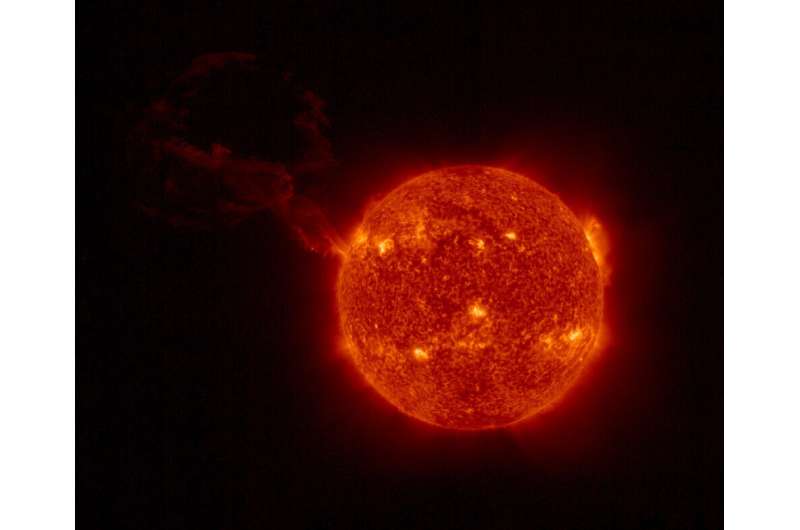A colossal flare erupted from the far side of the sun

Earlier this week, the sun erupted with a huge explosion, blasting solar particles millions of kilometers into space. The team for the ESA/NASA Solar Orbiter spacecraft says the blast is the largest solar prominence eruption ever observed in a single image together with the full solar disc.
Luckily for us here on Earth, the eruption on February 15, 2022 occurred on the farside of the sun, the side facing away from our planet. But ESA and NASA predict geomagnetic storms are possible in the next few days as the active region on the sun responsible for the blast turns toward us.
The event was captured by several spacecraft, including Solar Orbiter and STEREO A.
.STEREO A TO THE RESCUE: Somebody told me that STEREO A saw the huge eruption of the CME a couple of days ago. I only just checked, and it was spectacular! pic.twitter.com/TcZkXqUnly
— Keith Strong (@drkstrong) February 18, 2022
A solar prominence consists of red-glowing loops of plasma, structured by tangled magnetic field lines generated by the sun's internal dynamo. An erupting prominence occurs when such a structure becomes unstable and bursts outward, releasing the plasma. They are often associated with outbursts of charged particles called coronal mass ejections (CMEs), which if directed towards Earth, can wreak havoc with our space-based technology.
Evidence of that came last week when SpaceX lost up to 40 of their recently launched 49 Starlink internet satellites after several CMEs erupted. The solar particles affected Earth's atmosphere—'puffing' it up, so to speak—making it difficult for the satellites to maintain their orbits. In a statement on February 8, SpaceX said "the escalation speed and severity of the storm caused atmospheric drag to increase up to 50 percent higher than during previous launches."
The sun has definitely increased in activity the past few months, and this latest event on February 15 zapped two "sungrazer' comets that came close to the sun.
The filament eruption seen in SUVI 304 Å images as reported by @erikapal occurred ~35° behind the east limb (per STEREO-A). This turned out to be a huge CME! This animation combines running difference images from LASCO C2 and C3, which cover 6 Rs and 30 Rs, respectively. pic.twitter.com/9QsUfNRPcC
— Halo CME (@halocme) February 16, 2022
Provided by Universe Today




















